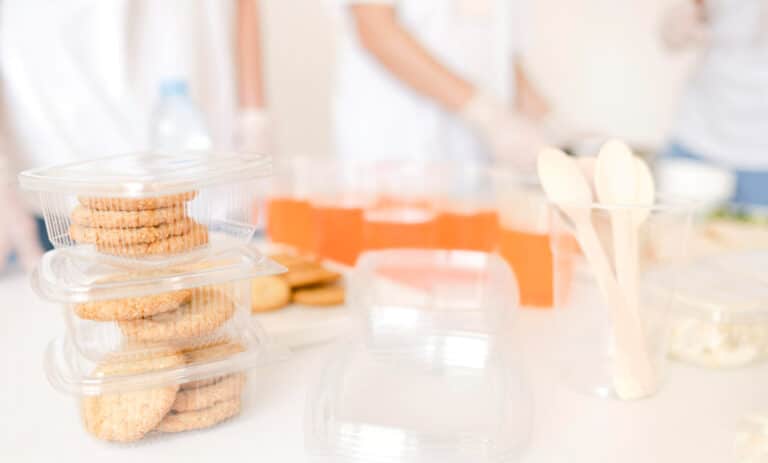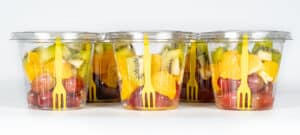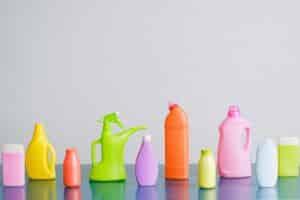What is a plastic clamshell container?
For those who do not know, clamshells are a type of carded packaging. They are most commonly made of plastic. But, they can also be made from styrofoam, paperboard, cardboard, and recycled paper. They are made from two identical “shells.” The shells are attached on one side and have tabs on the other side. These containers provide an airtight seal to keep items fresh and secure, while their hinged design allows for easy access. These containers have become increasingly popular in recent years due to their ability to effectively protect, promote, and transport food items such as fruits, vegetables, salads, sandwiches, and more.
These plastic containers can be found in a range of sizes depending on the item being packaged. The majority of clamshells are made from polypropylene (PP) or polyethylene (PE) which offers excellent clarity so that your product is visible from all angles. This provides maximum visibility when placed on shelves at grocery stores or other retail outlets. Their rigid structure also makes them stackable for added convenience when transporting or storing them.
Why are clamshell containers not recyclable?
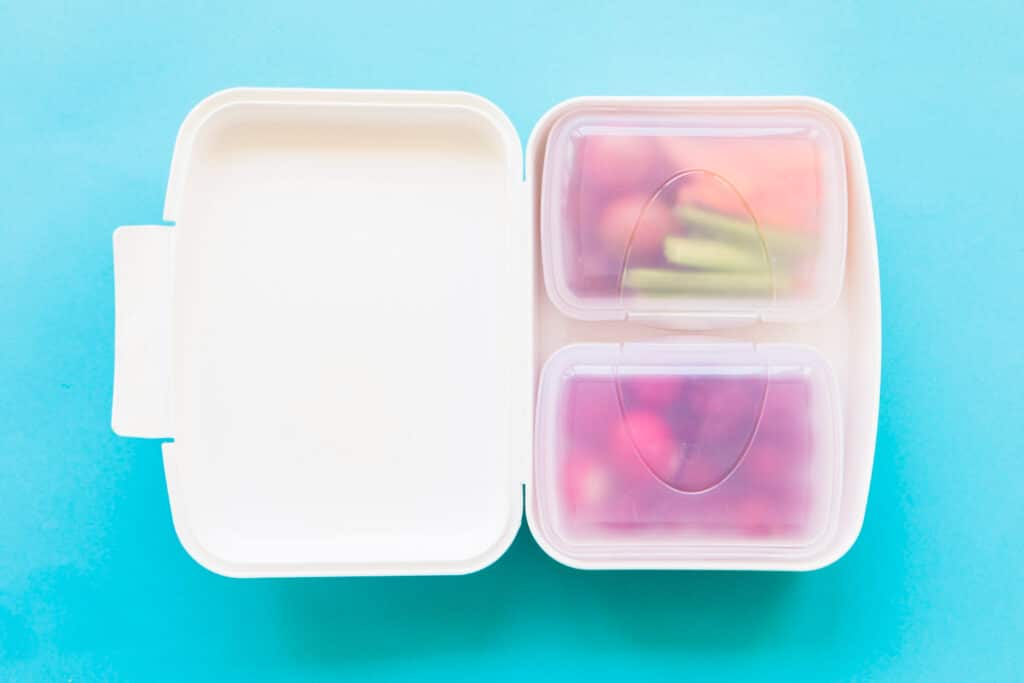
Clamshell containers are incredibly popular for food packaging, but unfortunately, they cannot be recycled due to their complex design. These containers are made from a combination of plastic and foil which make them difficult to separate for recycling. The structure of clamshells also prevents them from being efficiently processed through traditional sorting techniques used in the recycling industry.
How do you dispose of the clamshell containers?
The recycling process for clamshell containers varies among regions, so it’s important to check with your local government or solid waste department for rules specific to your area. Some municipalities may accept them in their curbside recycling program; however, many require that they be disposed of as garbage due to their small size and lightweight material. You can also find out if any retail stores or restaurants near you accept clamshells for reuse or recycling purposes.
Why use clamshell packaging?
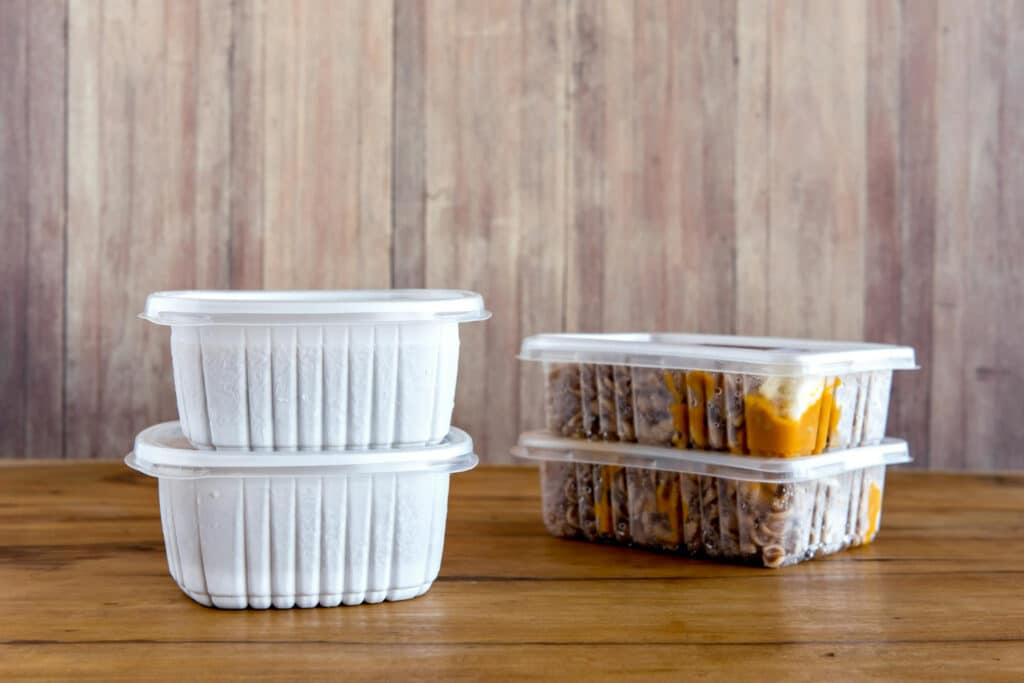
Clamshell packaging is a popular and effective way to package items for retail. Not only does it provide superior protection for the items, but it also allows businesses to easily display their products in a neat and organized way. Even though you may not know, this type of packaging can be used for a variety of items, from small toys to larger electronics. It is lightweight and durable, which makes it perfect for protecting delicate goods during shipping and handling.
This is not all! Plus, clamshell packaging offers an additional layer of protection against tampering or theft because the product can only be accessed by cutting through the thick plastic shell. Moreover, the astonishing design of the packaging also helps in drawing attention to merchandise on store shelves thanks to its eye-catching shape and size. Well, without a doubt these can attract more customers and increases impulse purchases, resulting in more sales.
Can you microwave clamshell containers?
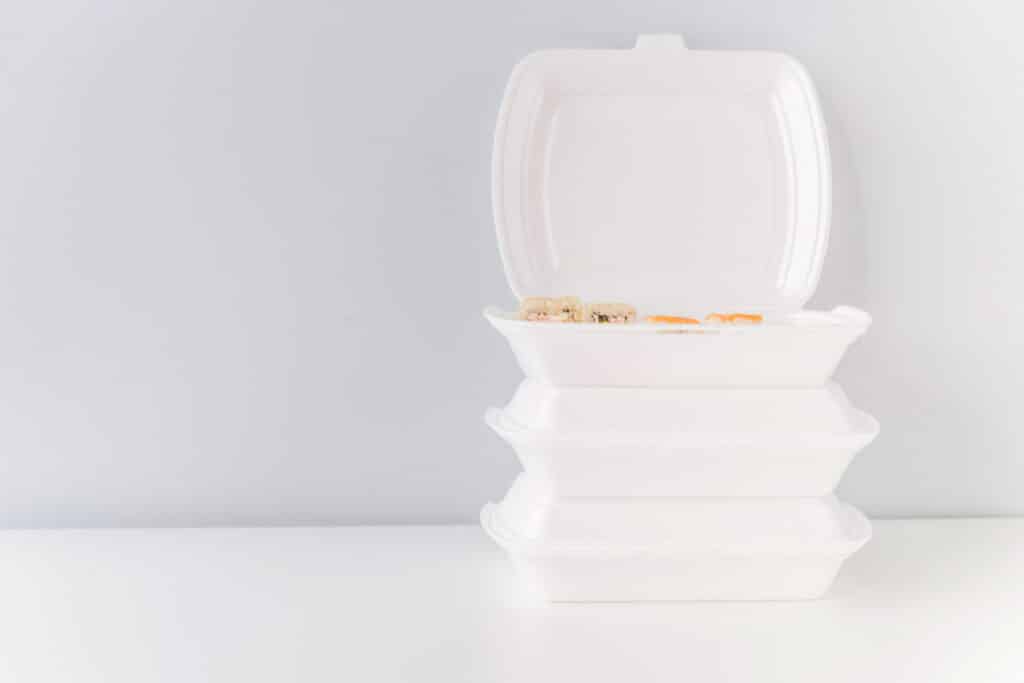
If you are wondering whether it is safe to put the clamshell plastic containers into the microwave, the short answer is not usually. While the plastic material of most clamshell containers can withstand temperatures up to 120 degrees Celsius, the plastic may contain dangerous chemicals that can leach out into food when heated in a microwave. Thus, if it does not say on the container that it is microwavable, it’s best not to try using it for this purpose. Using non-microwaveable clamshell containers could also be hazardous as they can warp or even catch fire due to their thin walls and lids when exposed to high temperatures. So, make sure to abide by the instruction on the label without putting yourself in any harm.
Why is it called clamshell?
have you ever wondered where this cleverly named packaging got its name? The answer may surprise you. The term “clamshell” originated in the 1950s when the first clamshell packages were made from two halves of an actual clamshell that were glued together. So, in reality, the packaging got its name from its sea-fearing counterpart. This idea quickly caught on and soon other materials, such as cardboard and plastic, began to be used for their superior strength and durability. From then on clamshell packaging became widely available as a way to store items with little risk of damage or theft. At present, clamshell designs feature secure hinge closures which allow for easy access while still keeping products safe from tampering or theft.
Are clamshell containers compostable?
To answer this question, it’s important to look at the materials used in a clamshell container. Typically, these containers are made from plastic or cardboard, both of which have different levels of compostability. Plastic clamshells often contain some type of barrier material that makes them non-compostable and must be removed before being placed in a compost bin. Cardboard clamshells, on the other hand, are typically fully compostable as long as they don’t contain any non-compostable components like wax coating or glues.
Conclusion!
As mentioned above, clamshell plastic containers offer an efficient, cost-effective packaging solution for many businesses. From food to retail products, these containers are versatile, durable, and secure. They can be custom designed and decorated to create a unique look that appeals to customers. And, even though these are difficult to recycle, it is quite safe to reuse them again. So, this packaging method is ideal for businesses looking to safely package their products while cutting down the costs for packaging. Make sure to get high-quality clamshell plastic containers from a certified plastic packaging manufacturer.

